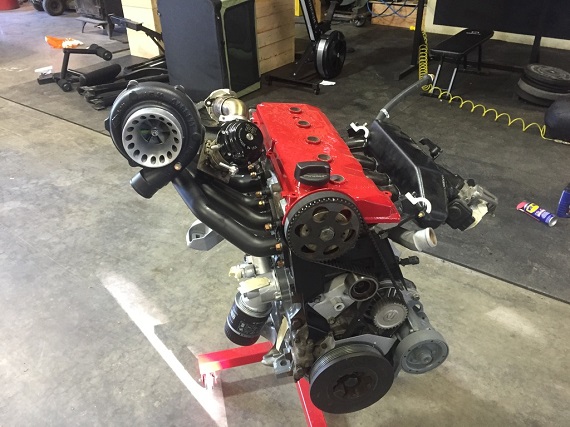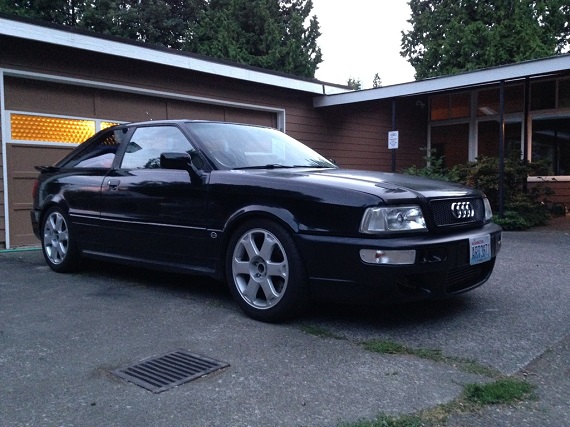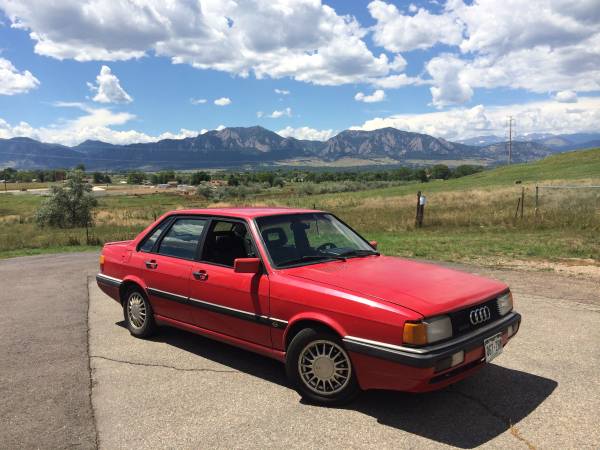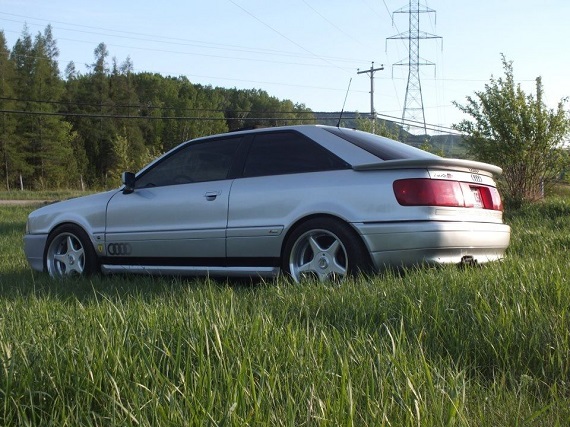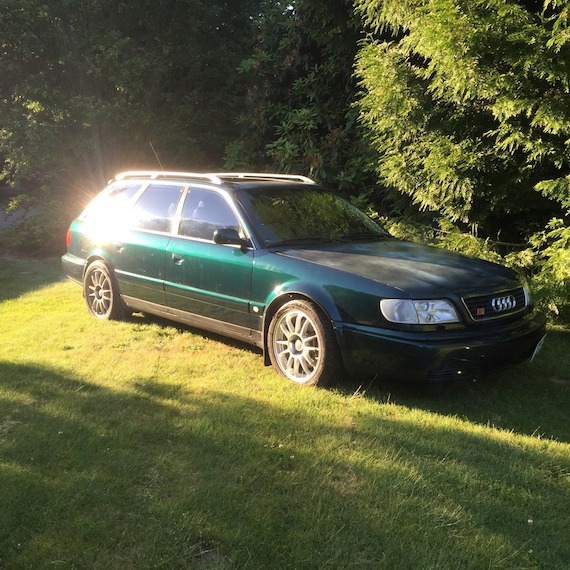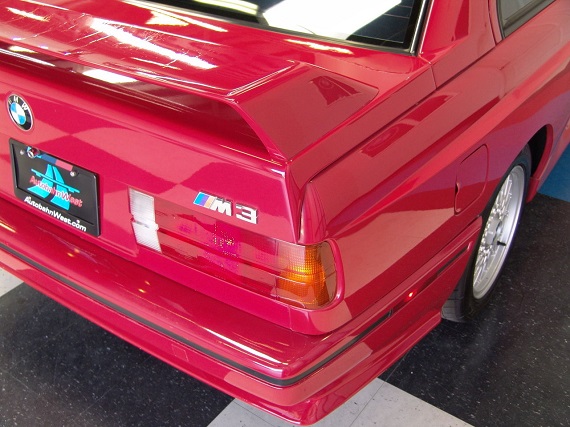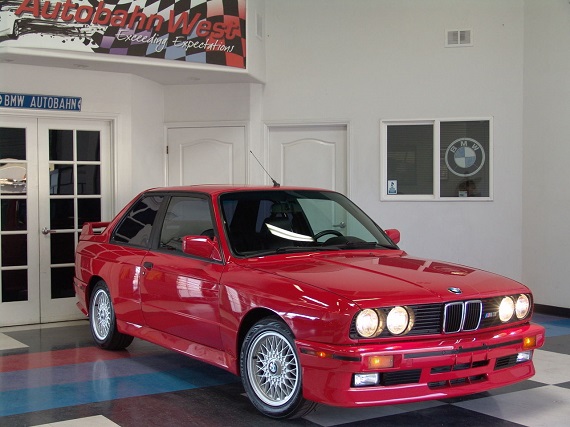In my recent “Gimmie Five” 10K Friday, I charted some of the developments of the venerable Audi powerplant. Though the Eurovan would continue using I-5s in some applications, ostensibly 1997 would see the end of the line for the original configuration with the discontinuation of the S6 even if it’s returned in spirit in the new 07k turbocharged 5 seen in the TTRS and RS3. Those cars are the successors of the original small turbocharged Audis; the Quattro and the S2 coupe and Avant, and while we briefly got the 10V Quattro, none of the later small turbocharged variants came to the U.S.. For enthusiasts that were unwilling to wait for either the new models to launch or the European models to become legally eligible for importation, a popular pursuit has been to recreate the turbocharged package in the small chassis. Adding the turbocharged motor in 20V form instantly transformed the B3 and B4 into performance machines, and with plenty of tunability in the package it was possible to create a really serious package. That tuning has been taken to another level by an entire generation of new electronic fuel injection management which exploits the longevity and stout construction of the inline-5 and makes absolute monsters. Sure, it was impressive that Audi produced versions that managed the best part of 1,000 horsepower in certain tune in the 1980s – but that, of course, was a major manufacturer with near unlimited budget. What’s more impressive is that small tuning firms subsequently have been able not only to match but to exceed those power levels, with companies like 034 Motorsport and Dahlback Racing making 1,100 – 1,200 plus horsepower variants on their own. Even though the B3 chassis is fairly heavy, if you can turn up that boost to high levels you’ve got yourself a rocketship – and this S2 replica certainly has the right ingredients for that recipe:
Tag: 20V
Today’s 10K Friday is something a bit unique; instead of a normal comparison between similarly valued cars, I’m going to chart the development of the venerable Audi inline-5. While, due to a dearth of examples, we won’t go back to the very early days of the I5 in the U.S., I’ve rounded up some of the more notable configurations that the engine appeared in the U.S.. Since, save some exceptions like the legendary Quattro and RS2, nearly every used Audi with this motor fits the under $10,000 limit (or comes close to it), that gives us the opportunity to see Audi’s continual technical changes to the inline-5. Though not as memorable as BMW’s inline-6 or Porsche’s flat-6, this motor was extremely important to the company nonetheless and was a character-defining attribute of Audis for nearly 20 years. So, let’s see how they kept it relevant from the 1970s into the 1990s:
CLICK FOR DETAILS: 1987 Audi 4000CS quattro on Craigslist
4 CommentsFor some time, if you wanted to go fast in a two-door Audi in the U.S., you had to make your own car from pieces of others. Even if you selected the much praised Quattro, you had a fairly heavy car to start with that was coupled to a rather measly 160 horsepower. Unless it’s snowing, a bone stock Ford Fiesta ST will pretty thoroughly stomp all over the legendary boxflared wonder in just about every situation. So people began modifying the turbocharged cars to produce more boost and bring them into line with their European counterparts. Of course, when it came to the replacement for the Quattro, those that waited longingly from 1985 until 1989 for the next turbocharged coupe were greatly disappointed. Sure, the new 90-based B3 Coupe Quattro had 20 valves under the hood – but no turbo came here. Europeans enjoyed several iterations of the turbocharged B3 and B4, including the Porsche tuned RS2, but in North America only the normally aspirated, slightly portly 2-door hatch came here. Again, it was no surprise that as soon as they were outside of warranty, people began to tinker; in this case, making their own S2s out of pieces from their bigger brother 200/S4s. Installing the 20V Turbo into the engine bay instantly transformed the Coupe Quattro from competent cruiser to sleeper assassin:
CLICK FOR DETAILS: 1990 Audi Coupe Quattro on eBay
Comments closedIn yesterday’s S4 post, I covered many of the special items that made the ’92 model unique for the U.S. market; in fact, I said that in many ways it was the most highly sought of the C4 models. Well, that probably was a bit of overstatement in at least one regard, because while it may be true for sedans for many the Avant model from 1995 was much more special. 1994 to 1995 saw some major changes for the C4; the most obvious being the model designation change from S4 (1991-1994) to S6 (1995-1997). European models had some additional drivetrain options that weren’t available in the U.S., and indeed the Avant had previously been available in S4 form, but the 2.2 liter turbocharged inline-5 carried over largely unchanged into 1995. The big news was the addition of the Avant to the U.S. lineup; at the time, as expensive as an Audi got here. There was also the obvious external refresh; smooth body-colored bumpers and wider side trims eliminated the rubberized black moldings. The hood and lights were lightly re-sculpted too, along with the change (rolling, for some models) from the Fuchs-made 5-spoke alloys to the Speedline-made 6-spoke Avus wheels which would be the signature S-wheel for the next decade. Gone were two staples of the Audi lineup from the 1980s – Procon 10, the seatbelt pre-tensioning safety system Audi highly marketed in the late 1990s disappeared with little fanfare, but also, perhaps more strikingly, S cars would no longer be branded with “quattro” badges – a change that would carry on nearly until today’s models, where models like the RS7 re-introduced it in the grill. Inside minor changes were introduced; a revised dashboard, shift knob, along with the introduction of the most notable change (once again, rolling) to a 3-spoke sport steering wheel. It was a tremendous amount of minor changes that in sum resulted in a slightly different feel for the S6; slightly more polished and grown up, carrying the new design language for Audi that would remain for the next decade. Audi wasn’t done, though, because in “1995.5” Audi once again changed several items on the then-still-new S6. This included a major change moving forward – the elimination of driver control of the rear differential, a hallmark of Audis since the introduction of the original Quattro. Audi opted for an “electronic differential lock”, which in reality was a system which utilized the ABS system to detect wheelspin and apply the brakes. This major change resulted in some minor interior tweaks, such as moving the cigarette lighter, and there were additional revisions to the radio. The transmission’s traditional weak first gear was also addressed, as well as adding infrared locking and some other minor trim changes. All of these changes – some of them running changes – give the limited production S6s, and especially the Avants, a bit of a bespoke feel. With numbers produced only in the hundreds, these are special and coveted cars that are very capable – and highly sought:
CLICK FOR DETAILS: 1995.5 Audi S6 Avant on QuattroWorld
Comments closedThis one has been brewing in my head for some time, and required only two things; the right two cars. I think, in this case thanks to the help of our reader Martin, I might just have the right two candidates. While BMW enthusiasts love to tout the virtue of the boxflared M3, they often overlook the importance of the Quattro. The chunky, Giugiaro-designed Audi made it to the market with its bulging quarters a full 5 years ahead of the M3, yet the DTM star is arguably much better known than the all-wheel drive Rally champion. Both were certainly important to the development of their respective corporate brands; both have illustrious careers as race cars and both are considered by connoisseurs to be the best design of those that followed. Quietly, while the market-star M3 has soaked up the headlines, good condition Quattros have also been appreciating, and with far fewer of them produced than M3s they’re a more rare sight today. They’re also, generally, much older and fewer were taken care of in the way that the M3s were pampered. Add little factory support and an even worse balance of the number imported to North America – only around 10% of the total of North American bound M3s – and it’s a hard match up. Yet, today we have two overall great condition cars to consider. Who wins the boxing match? Let’s start with the odds-on favorite M3:
